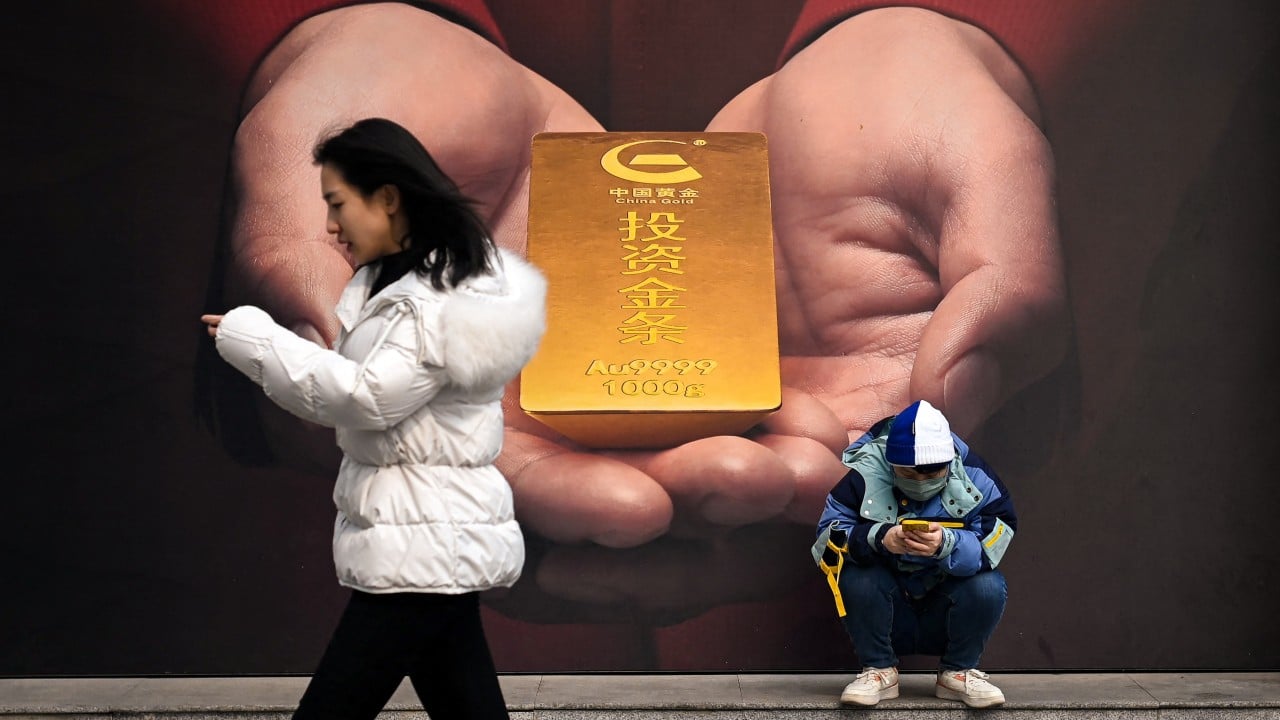Chinese investors sitting on 150 billion yuan (US$21 billion) worth of gold exchange-traded funds (ETFs) are likely to enjoy an extended run of a world-beating rally in the metal’s price amid robust demand, according to Swiss banks Julius Baer and Lombard Odier.
Advertisement
Even after gaining almost 50 per cent this year, gold prices were set to rise to US$4,000 an ounce in the next 12 months, Julius Baer said, while Lombard Odier said the precious metal would rise to US$3,900. JPMorgan Private Bank was more bullish, predicting gold would hit between US$4,050 and US$4,150 in the middle of next year. Spot gold was trading at US$3,875 an ounce on Thursday after hitting a record high of US$3,895.33 a day earlier.
“Even after a strong year-to-date rally, gold remains an effective portfolio diversifier and hedge against political and economic risks, in our view,” UBS Global Wealth Management’s chief investment office said in a report last month. “We expect gold to benefit from a weaker dollar, robust central bank demand, lower real interest rates and investor concerns about rising government debt levels, the potential for financial repression and ongoing geopolitical risks.”
That would come as good news to Chinese investors, who have limited investment options beyond yuan-denominated stocks and properties, and only restricted access to overseas equities. For now, only the performance of mainland-listed small capitalisation stocks can match gold’s returns. A gauge of the tech board on the Shanghai exchange has surged 45 per cent this year amid a global frenzy over artificial intelligence.
Currently, 13 gold ETFs trade on the Shanghai and Shenzhen exchanges, according to Bloomberg data. The biggest among them is Hua An Yifu Gold ETF, with 59.8 billion yuan of assets under management. The 13 funds have returned 42 per cent so far this year, tracking the spot gold price on the Shanghai Futures Exchange.
Advertisement
Gold’s spectacular run stands in sharp contrast to the US dollar index, which typically has a negative correlation with the metal and has declined nearly 10 per cent this year.
Global central banks have ramped up buying of gold as a diversified foreign reserve, hedging against risks from US tariff policies and budget deficits. They bought around 480 tonnes of gold in the first half, an increase of 12 per cent from the same period a year ago, according to industry data.

